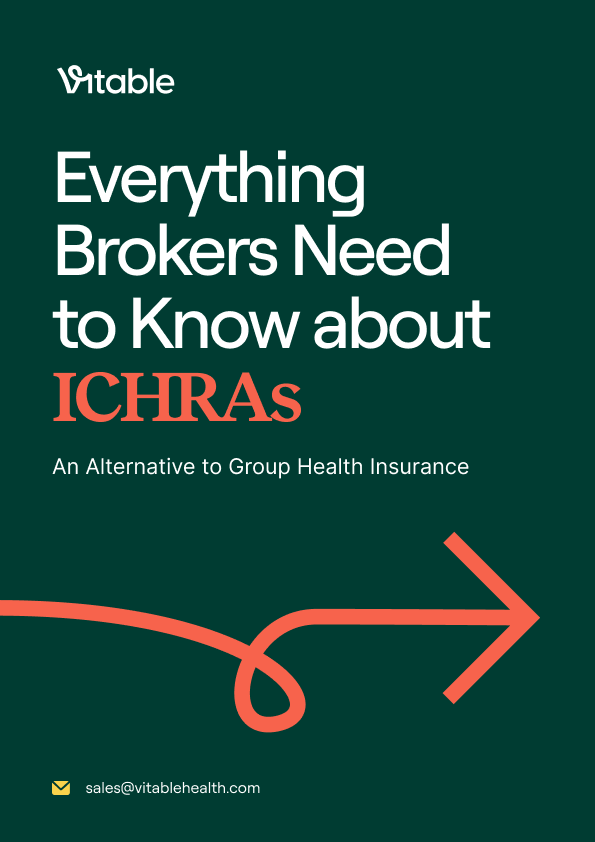Comparing Health Insurance Plans in 2024 - Which One is Right For Your Business?

Navigating the landscape of health insurance can be overwhelming with the myriad of options available. Each plan varies significantly in terms of coverage and costs, and it's crucial to understand these differences to make an informed decision. Health insurance plans are generally tiered into five distinct categories: Platinum, Gold, Silver, Bronze, and Catastrophic, each offering varying degrees of coverage and out-of-pocket costs. Additionally, major insurance companies offer several types of plans, such as Preferred Provider Organization (PPO), Health Maintenance Organization (HMO), Exclusive Provider Organization (EPO), Point of Service (POS), High Deductible Health Plans (HDHP), and Catastrophic Health Plans. Understanding the key points and costs associated with each plan can help you choose the most suitable one for you, your family, or your business. In this guide, we will break down each plan's features and costs to help you make an informed decision.
Plan Coverage Tiers
There are several choices you can choose from when shopping for health insurance, depending on your deductible and cost of choice. Each of these plans are tiered into five distinctive categories:
Platinum:
- Employer covers: 90% of medical costs, on average
- Employees pay: the remaining 10%
Gold:
- Employer covers: 80% of medical costs, on average
- Employees pay: the remaining 20%
Silver:
- Employer covers: 70% of medical costs, on average
- Employees pay: the remaining 30%
Bronze:
- Employer covers: 60% of medical costs, on average
- Employees pay: the remaining 40%
Catastrophic Plans:
These only pay after getting to a certain deductible level. Regardless if you’ve met this deductible, these plans have to cover your first three primary care visits and any preventative care costs.
Additionally, there are some other types of plans provided by major insurance companies. It’s important to know the differences between these plans to ensure that you pick the most fitting plan for you, your family, or your business. Here are the different plans and how they differ:
Selecting a Plan Design:
Preferred Provider Organization (PPO)
Key Points:
- Higher costs for you to visit out-of-network providers
- High level of flexibility in picking your healthcare providers. You can pick any provider you’d like, but out-of-network will cost more
- More paperwork for out-of-network providers
Associated Plan Costs:
- Premium: Your monthly costs for the PPO
- Deductible: If you see an out-of-network provider, you’ll likely have to pay a deductible to go along with your care
- Copay/Coinsurance: An upfront, flat fee for care. You’ll have to pay a monetary amount for a copay or a percentage of the charges for coinsurance

Download 2025 Employer Guide to ICHRA
Vitable’s ICHRA Guide gives employers a clear, step-by-step resource for building smarter, ACA-compliant benefits.
This guide explains how ICHRAs work, who qualifies, and how Vitable simplifies setup, onboarding, reimbursements, and compliance — while giving employees more flexibility, control, and care.

Download Vitable’s 2025 Broker’s Guide to ICHRA
The Broker Guide to ICHRAs is a comprehensive resource that helps brokers understand, sell, and manage Individual Coverage HRAs with confidence.
This guide covers everything from compliance and class design to administration flows, case studies, and how Vitable streamlines quoting, enrollments, and reimbursements for brokers, employers, and employees.
Health Maintenance Organization (HMO)
Key Points:
- Very little flexibility in choosing a provider
- Referrals are needed to make most appointments to ensure that the provider is covered by insurance
- Very little paperwork as the referrals limit the amount of out-of-network providers you can access
Associated Plan Costs:
- Premium: Your monthly costs for the HMO’s coverage.
- Deductible: How much you have to pay before you begin to receive coverage.
- Copay/Coinsurance: An upfront, flat fee for care. You’ll have to pay a monetary amount for a copay or a percentage of the charges for coinsurance
Exclusive Provider Organization (EPO)
Key Points:
- Moderate flexibility in choosing a provider
- No out-of-network coverage
- Very little paperwork as the referrals limit the amount of out-of-network providers you can access
Associated Plan Costs:
- Premium: Your monthly costs for the EPO’s coverage.
- Deductible: How much you have to pay before you begin to receive coverage.
- Copay/Coinsurance: An upfront, flat fee for care. You’ll have to pay a monetary amount for a copay or a percentage of the charges for coinsurance
Point of Service (POS)
Key Points:
- High flexibility in choosing a provider
- Ability to visit out of network providers
- Referrals from a primary care provider
Associated Plan Costs:
- Premium: Your monthly costs for the POS's coverage.
- Deductible: How much you have to pay before you begin to receive coverage.
- Copay/Coinsurance: An upfront, flat fee for care. You’ll have to pay a monetary amount for a copay or a percentage of the charges for coinsurance
High Deductible Health Plan (HDHP)
This health plan could be a PPO, HMO, EPO, or POS.
Key Points:
- High out of pocket costs until your deductible is reached
Associated Plan Costs:
- Premium: Your monthly costs for the HDHP's coverage.
- Deductible: How much you have to pay before you begin to receive coverage.
- Copay/Coinsurance: An upfront, flat fee for care. You’ll have to pay a monetary amount for a copay or a percentage of the charges for coinsurance
Catastrophic Health Plan
This plan can be accessed by people under 30 years of age.
Key Points:
- Lower premium
- The provider must cover the first three primary care visits, as well as cover preventative care
Associated Plan Costs:
- Premium: Your monthly costs for the plans coverage.
- Deductible: How much you have to pay before you begin to receive coverage.
- Copay/Coinsurance: An upfront, flat fee for care. You’ll have to pay a monetary amount for a copay or a percentage of the charges for coinsurance
As you can likely tell by now, there are a plethora of different healthcare plans available for a variety of different payment tolerances. We hope this guide helps direct you to the plan that’s right for you!
Ready to learn more?
Stay ahead with the latest insights on healthcare, benefits, and compliance—straight to your inbox.
Get a quote
Get a personalized health benefits quote tailored to your company’s unique needs.
Vitable helps employers provide better healthcare to their employees and dependents by improving accessibility, cost, and quality.
